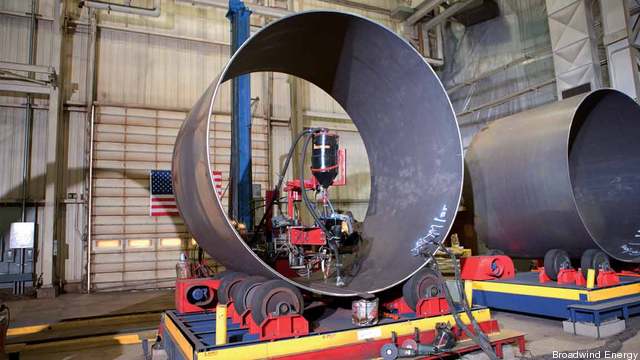The US is at an energy crossroads of sorts, with decisions to make about how best to fuel our vehicles, businesses and homes in an era of abundant fossil fuels, falling alternative energy prices, climate change concerns and economic uncertainty. These are the issues Michael Levi dissects in his new book, “The Power Surge –… Keep reading →
Cleantech
Sign up and get Breaking Energy news in your inbox.
We will never sell or share your information without your consent. See our privacy policy.As an Energy Strategist focused on advanced energy solutions, I’m very excited about the historic floating wind turbine, the first in the U.S., which recently entered the waters off the coast of Maine. However, while much of the focus has been on the 65-foot tall Volturn prototype, I thought it would be useful for readers… Keep reading →
North America has the equivalent of a new lease on life with regard to energy, as decades of declining oil & gas production drastically reversed course in the past 5 years, and petroleum liquids consumption is dropping after a long growth spurt. This has led the US to import fewer barrels of oil from overseas… Keep reading →
Mayor Bloomberg Speaks at Columbia University Center on Global Energy Policy Launch
By Jared Anderson
New York City – the world’s energy finance capital and one of the world’s largest commodity trading marketplaces – is a fitting location for the Center on Global Energy Policy. As part of Columbia University’s School of International and Public Affairs, the center will seek to “provide independent, balanced, data-driven analysis to help policymakers navigate the complex world of energy.”
At Wednesday’s launch event, New York City Mayor Michael Bloomberg was joined by energy experts and US government officials, who helped officially inaugurate the new energy policy initiative. Keep reading →
FY 2014 Budget Proposal: Significant Investment in Clean Energy Development
By Energy Solutions Forum
In his FY 2014 budget proposal, President Obama increases spending on clean energy development, seeking to expedite R&D and boost cost-competitiveness and deployment of clean energy technologies.
President Barack Obama’s FY2014 budget plan released on April 10, 2013, proposes increases in spending for clean energy production and deployment. The budget aims to support cost-competitiveness and deployment of renewable power, electric vehicles, advanced biofuels, innovative manufacturing processes, and energy efficiency in residential and commercial buildings. Keep reading →

The key to broader penetration of solar energy depends on access to capital markets and innovative financial structures that can reduce the cost of capital for project finance as well as increase the investor base beyond the traditional tax-equity driven investors. There is a strong case for the DOE to establish the Advancd Research Project Agency-Capital (ARPA-C) that will function to support the broader adoption and commercialization of renewable energy through mechanisms, including credit enhancment and direct equity investments for capital market project aggregation warehouse facilities and securitization transactions.
While ARPA-E has been successful for the deveopment of new renewable technologies, the renewable sector can benefit from the expansion of ARPA-E to include capital to catalyze the breakthroughs for financial innovations. ARPA-C innovations can help bridge the funding gap that challenges renewable energy growth by providing structural support for renewable energy projects to develop capital markets solutions. Capital Markets structures can help reduce the total installed cost of solar electricity significantly – and combined with other DOE initiatives could help make solar power cost-competitive without additional subsidies. The Obama adminstration outlined in the March 20, 2011 publication “Blueprint for a secure energy future”, three major goals : Keep reading →

James Hansen was a NASA scientist for 46 years and a prominent climate change critic credited with being one of the first to speak out about the issue. He recently left his position at the government space agency so he could freely address climate change on a full-time basis.
In this brand new video, he discusses his decision to leave NASA and suggests increasing the price of fossil fuels at the policy level can help accelerate a transition to cleaner energy solutions. Keep reading →

The energy sector has heated up in recent years as natural gas drilling technology has resulted in increased supply and the power sector has revolutionized in the face of monitoring and mobile technology that boosts the promises of smart grids. Firms are hiring, investments are going ahead at both the national and international level, and the industry is attracting attention as consumer technology advances filter into the “industrial internet.”
Recognizing its role in promoting the future of the industrial internet, the Department of Energy launched a manufacturing initiative it claims will help boost the prospects of the clean economy. The Clean Energy Manufacturing Initiative is small by comparison to the controversial payouts under the stimulus in the first Obama administration, but it signals a sustained commitment by the White House to the concept of a revitalized manufacturing sector driven by cleantech. Keep reading →





